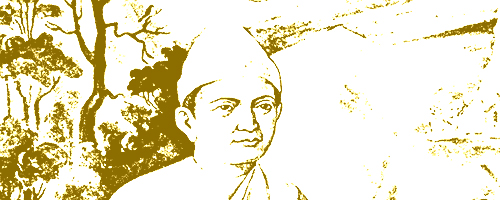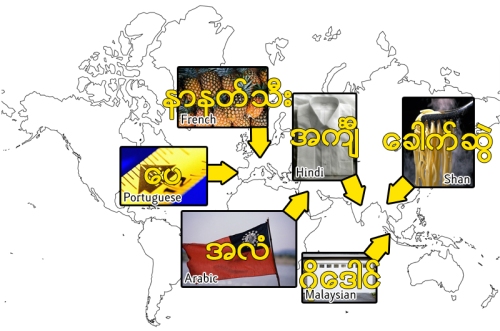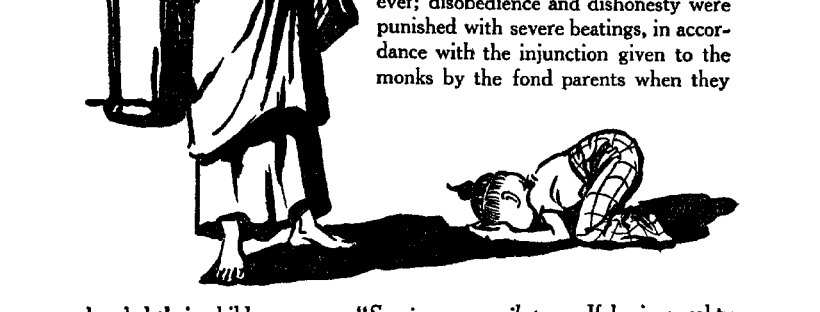The other day, I came across something profound. Perhaps it’s been forgotten by the vast majority now, but Burma, like its Southeast Asian neighbors, once had an Indic national motto, during its short-lived parliamentary period following independence from 1948 to 1962.
Category: History
Postcards from colonial Burma
New York Public Library’s Digital Collections recently rolled out a number of public domain works. I was pleased to find a beautiful repository of postcards from colonial Burma by D.A. Ahuja, a Rangoon-based photographer.
What’s in a name? Origins of ‘Naypyidaw’
There’s been much confusion in English language media with respect to the translation of the name of Burma’s national capital, Naypyidaw (နေပြည်တော်). Conventional translations range from “abode of kings” to “royal capital” to “seat of the king” to “royal city.” All of these are mostly correct, but are without nuanced context.
Digital Library of India: A repository of colonial Burma records
The other day I stumbled across the Digital Library of India (www.dli.gov.in), which turns out, is a treasure trove of resources on Burma, particularly on books and government reports compiled during the colonial period, as well as a handful of books from the post-colonial period.
The world of weizzas

Bo Bo Aung, a weizza dressed as a layman.
A few months ago, I wrote a little about weizzas, supposed supernaturals in Burmese Buddhist belief.
Today, while searching on the Periodic Archives Online website, I discovered a scholarly journal article about weizzas, very much unknown to non-Burmese people. For much of the information I will provide, I consulted:
Ferguson, John P., and E. M. Mendelson. “Masters of the Buddhist Occult: The Burmese Weikzas.” Contributons to Asian Studies (Vol 16).
The word weizza (ဝိဇ္ဇာ), from Pali vijja means “knowledge” or “wisdom” and is commonly used to refer to Bachelors of Arts degrees. However, weizza is also the name of Burmese human beings who have gained supernatural powers (from flying to curing), usually transmitted from masters. This ‘cult’ within Burmese Buddhism developed prior the colonial era in response to the dramatic cultural and religious changes Burmese society had undergone, as the Burmese monarchy, the traditional epitome of Buddhist religion and Burmese culture, was ended.
Letting the colonial relics rot

The Secretariat in the foreground and St. Paul's Cathedral and Shwedagon Pagoda in the background.
After reading an article about Rangoon’s Secretariat building (alternatively called the Prime Ministers’ Office or Ministers’ Office) in shambles in the New Era Journal (Burmese article here, but I cannot find an English translation), I felt compelled to write about the situation of preserving colonial buildings in Burma. The Secretariat is a very important historical landmark, considering the assassinations of Aung San and other ‘martyrs’ occurred there. Martyrs’ Day, which recently passed, commemorates what happened there that day. Moreover, the building, which was built in the colonial era, was home of the executive during the formative years of a newly independent Burma.
60 years on: Burma’s Martyrs’ Day
Today, July 19, is one of Burma’s most important national holidays. Martyrs’ Day is called Azani Nay (အာဇာနည္ေန ့) in Burmese (Azani is Pali-derived word for martyr). It commemorates the day in 1947 nine prominent men, namely Aung San, Thakhin Mya, U Ba Cho, U Abdul Razak, U Ba Win, Saopha Sao San Tun, Mahn Ba Khaing, U Ohn Maung, and Maung Htwe were assassinated for political reasons. Among the murdered were seven cabinet members, Aung San’s bodyguard Maung Htwe and a cabinet secretary (U Ohn Maung).
Traditionally, wreaths are laid at the Martyrs’ Mausoleum in Rangoon, by government officials and relatives of the martyrs. According to The Irrawaddy, this year, as in the past years, Aung San Suu Kyi was unable to attend the ceremony and lay wreaths for her father.
Interesting Burmese word origins

A graphic I made, showing some of the linguistic diversity found in the Burmese language.
Burmese has a hodgepodge of words that come from other languages, some that would surprise most people, at least me. It’s a given that many Burmese words come from Pali (from Buddhism) or English (from colonial rule), but quite a number of words also come from obscure and seemingly unrelated languages to Burmese. I’ve compiled a list of the most interesting ones.
Are Burmese non-Buddhists superior?

Left to right: Anglican cathedral in Rangoon, Chinese temple in Kalaw, Shan State, Hindu temple in Rangoon, Mosque in Rangoon, Buddhist temple in Taunggyi. All photos taken by me.
In Burma, approximately 9 in 10 are Buddhist, while the remainder are Muslims, Christians and animists. There are conflicting statistics, though, with some estimates of non-Buddhists as high as 20 to 30 percent. Although Burma has no ‘state religion’ (it was not prescribed in the 1974 socialist constitution but Buddhism was recognized as having special status in the 1948 constitution), the State Peace and Development Council is oriented toward Buddhism and propagates it. Freedom of religion in Burma is nominal; there is rampant discrimination toward non-Buddhists. For example, the Burma 2006 Human Rights Yearbook, released by the Burmese government-in-exile, has an entire chapter devoted to religious discrimination. One passage states:
Buddha in a bottle

My grandfather’s house has an immense collection of Buddha statues, extending throughout the entire length of the living room. The most interesting Buddha in the three altars is one in a bottle. It is amazing how the artisan managed to put the elaborate altar, details like the disciples and flower vases inside the bottle, but what is even more amazing is its history.


